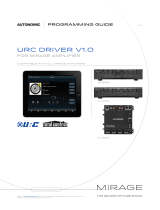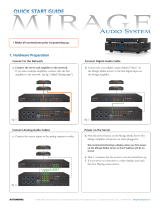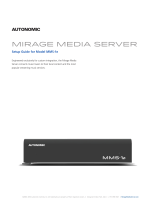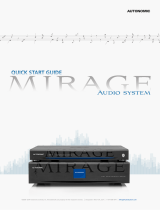
URC Driver v1.2 for Mirage Media Server | 8 of 15
MirageAudioSystem.com
Tip: If a display is connected, the MRX-20 gets stuck on loading screen when
a new project is pushed. To resolve this, a monitor needs to be added to the
project. This can be added to any room. In Add Other Devices, pick Database:
URC > IR Database > TV Category > and select a monitor from any brand (for
instance, Samsung if you have a Samsung monitor) > pick any model, and add
to project. Rename the device to Monitor for easy recognition. See step 7 for
conguring this monitor input.
6. Go to Network Setup. This section congures both URC and non-URC
devices (in this case, Mirage Media Server) with the current network
address. As a prerequisite, ensure all the devices are on the network with
desired static or DHCP conguration.
g. Click on tab URC Device. This will show all the currently added URC
devices in the project in the left pane. In this pane, click on the device
you want to congure the IP address for. Then click on the Refresh
button. This might take a small amount of time, after which it will show
you the discovered URC devices on the current network of currently
selected type in the right pane. Pick the device in the right pane with
the correct IP address. Then click on Assign button. If the devices are
not discovered, please ensure the actual device is on the network and is
switched on. Alternatively, you can also manually enter the MAC address
and IP addresses of your devices in the left pane.
h. Click on tab Non URC Device. This will show all the currently added
non-URC devices in the project in the left pane. If you previously added
Mirage Media Server to a room, its instance(s) should show up in the
left pane. Enter the IP Address for the MMS in the IP Address eld. Port
eld should already be lled with value 5004.




















